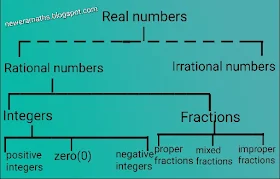Binomial theorem
We all know that a polynomial with two terms is called a Binomial.
Now, Between these two terms, both may be variable or a combination of a variable and a constant number.
As for example, 3x-4y, 2x+6, ax+b, 2x² -3y², a+ x ,..etc.
Now, the square or cube of the binomial (a+x) can be determined easily by the formulas or basic multiplication methods.
But , it is very hard and labourious to find the n-th power(n is any positive integer) of the binomial (a+x) by basic multiplication. So, the multiplication method fails to find the value of (a+x)ⁿ.
Then, how can we find the value of (a+x)ⁿ=?
In this case algebra helps us. To solve these type of problems, algebra gives us a special formula. This formula is known as Binomial theorem.
Definition:
In algebra a general formula is used to expand a binomial with power n( any positive integer n) as a series of finite terms.This formula is called binomial theorem.
The binomial theorem was discovered by sir Issac Newton.
Statement of binomial theorem:
For any positive integer n and any real number a and x ; the expansion of the binomial (a+x) with power n, i.e, the expansion of (a+x)ⁿ is given by:
(a+x)ⁿ= aⁿ + C(n,1)×(aⁿ⁻¹)×x¹ + C(n,2)× (aⁿ⁻²)×x² +...+xⁿ= aⁿ+ n×aⁿ⁻¹×x + {n(n-1)/2! }×aⁿ⁻²×x² +...+xⁿ.
Here, C(n,1) , C(n,2),...C(n,n) are called the binomial coefficients.
Note:
The number of terms in the expansion of (a+x)ⁿ are always finite and equals to (n+1).
Pascal's triangle and binomial theorem:
In 1660 Pascal introduced an expansion of a binomial with power n.
He observed that,
(a+x)⁰ = 1
(a+x)¹= a¹+ x¹
(a+x)² = a² + 2ax + x²
(a+x)³ = a³ + 3a²x + 3ax² + x³
(a+x)⁴ = a⁴ + 4a³x + 6a²x² + 4ax³ +x⁴
and so on.
Pascal observed the special pattern or relation between the power(exponent) 'n' and binomial coefficients.
Power(exponent) of binomial coefficients
0 1
1 1 1
2 1 2 1
3 1 3 3 1
And so on.
Expansion of some important binomial expressions:
(a-x)ⁿ = aⁿ - C(n,1)×{aⁿ⁻¹ }x¹ + C(n,2)×{aⁿ⁻²} x² -...+(-1)ⁿ × xⁿ.
(1+x)ⁿ = 1+C(n,1)×x + C(n,2)×x² +...+xⁿ.
(1-x)ⁿ = 1 - C(n,1)×x + C(n,2)×x² -...+(-1)ⁿ ×xⁿ.
Note:
(1) The (r+1)-th term in the expansion of (a+x)ⁿ = t(r+1) ={C(n,r)×aⁿ⁻ʳ}×xʳ.
(2)The (r+1)-th term in the expansion of (a-x)ⁿ = t(r+1) = {C(n,r)×aⁿ⁻ʳ}×(-1)ʳ ×xʳ.
(3) If n is even the middle term of (a+x)ⁿ will be the (n/2 +1)-th term of the expansion.
(4) If n is odd, there will be two middle terms and they will be {(n-1)/2 +1}-th term and {(n+1)/2 + 1}-th term.
(5) The sum of the all coefficients in the expansion of (a+x)ⁿ is equals to 2ⁿ.
If you find out any incorrect information or know anything more about this , please write it in the comment section!













